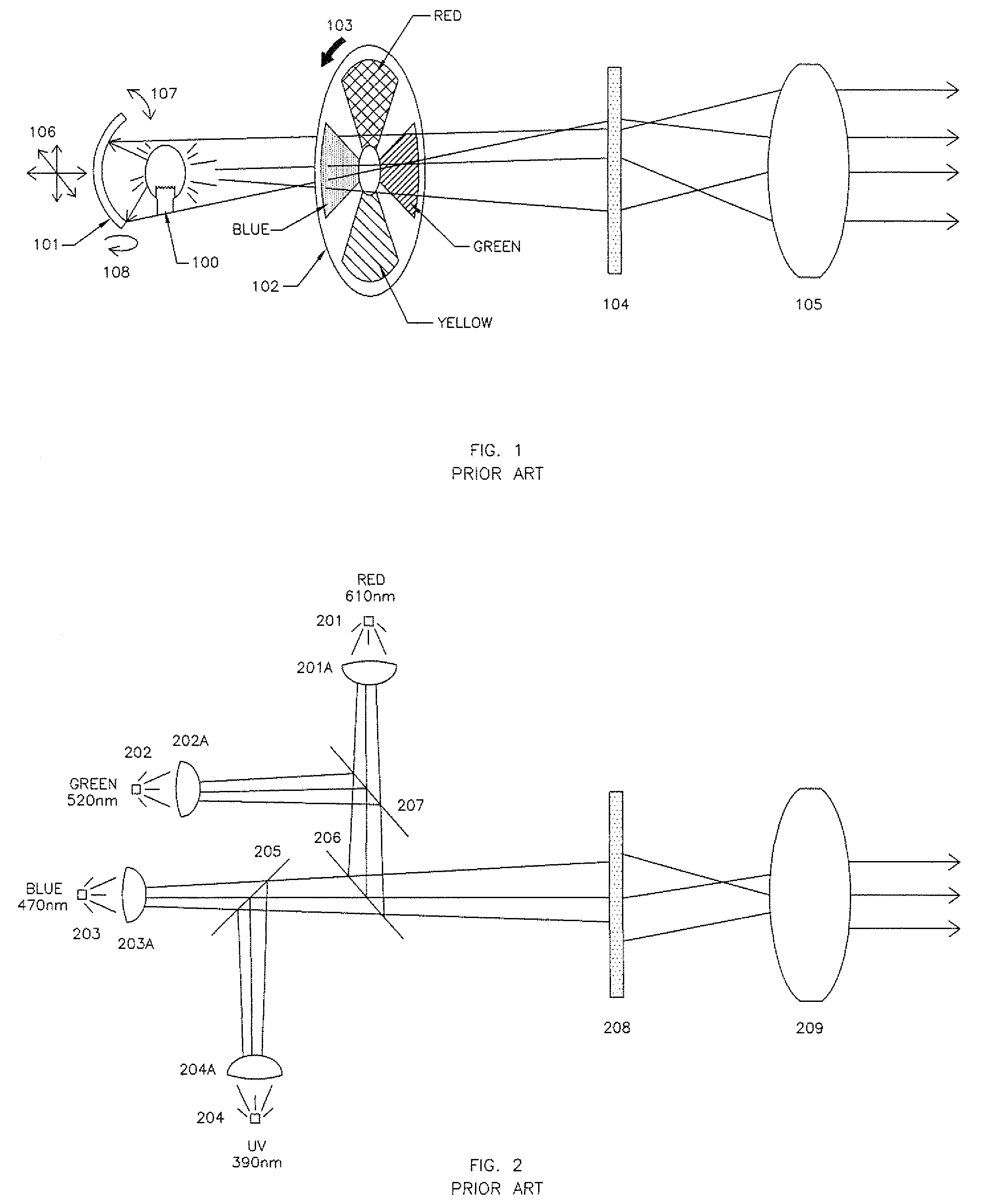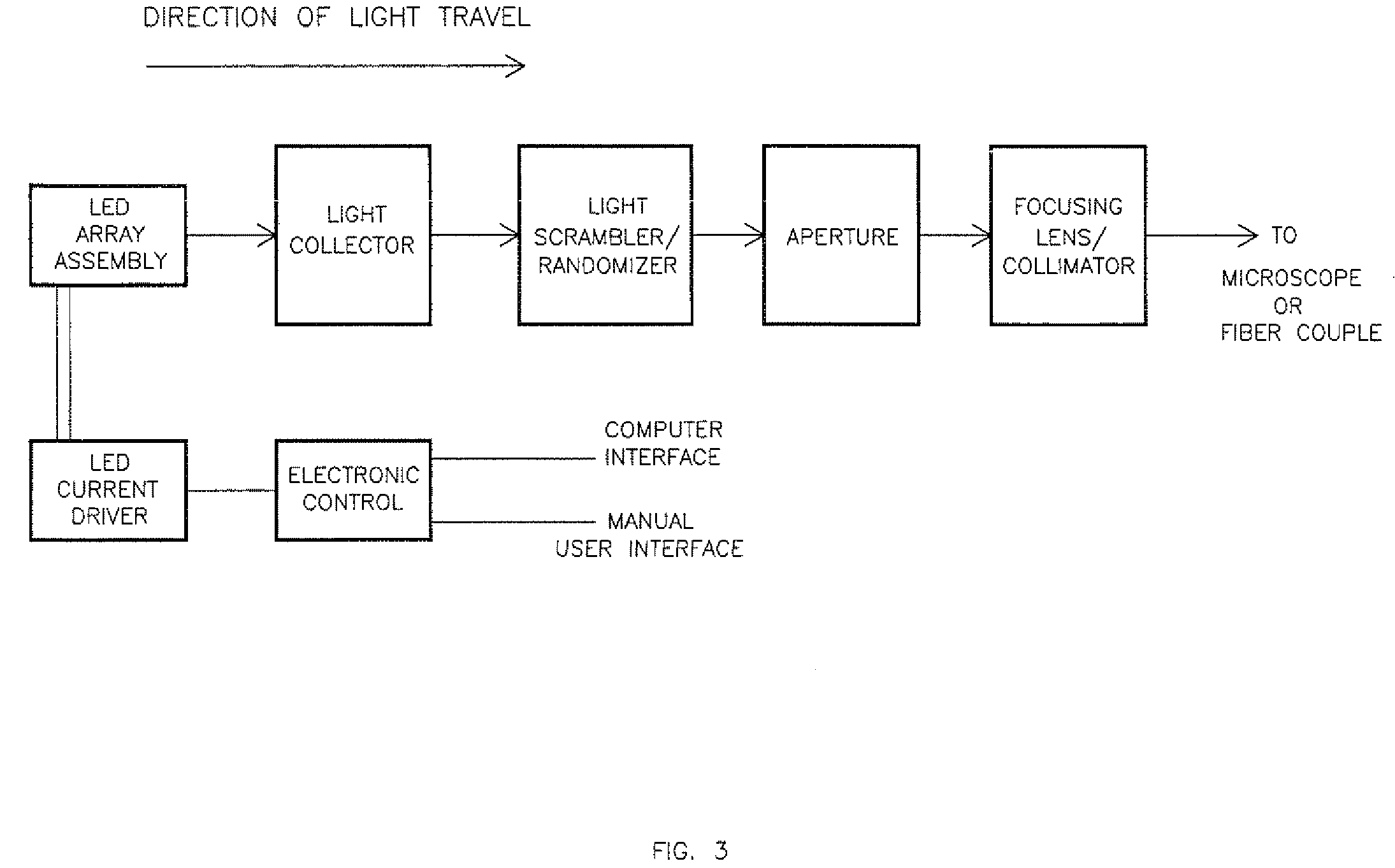Multiple wavelength LED array illuminator for fluorescence microscopy
a led array and fluorescence microscopy technology, which is applied in the direction of lighting and heating apparatuses, lighting support devices, instruments, etc., can solve the problems of high energy consumption, large unused light output from lamps, and difficult simultaneous achievement of all these criteria, and achieve large numerical apertures, large apertures and diameters, and high spatial uniformity.
- Summary
- Abstract
- Description
- Claims
- Application Information
AI Technical Summary
Benefits of technology
Problems solved by technology
Method used
Image
Examples
Embodiment Construction
[0028]A compact multiple wavelength illuminating apparatus is disclosed herein, comprising one or more LED array with accompanying optical elements that outputs intense, spectrally narrow light uniformly over a field of view. The LED array contains multiple strings, each string comprising several LED chips of the same wavelength, where the wavelength of each string is preferably different from wavelengths of the other strings, with each string controlled electronically as a separate channel. Alternatively, each string may comprise LED chips that emit different wavelengths, where the group of wavelengths emitted by each string is different from the groups of wavelengths emitted by the other strings, and where there can be overlap between the groups of wavelengths emitted by the different strings.
[0029]Several major advantages result from the use of an LED array that contains LED chips of multiple wavelengths, organized into separately controlled strings. Multiple exciting wavelengths...
PUM
 Login to View More
Login to View More Abstract
Description
Claims
Application Information
 Login to View More
Login to View More - R&D
- Intellectual Property
- Life Sciences
- Materials
- Tech Scout
- Unparalleled Data Quality
- Higher Quality Content
- 60% Fewer Hallucinations
Browse by: Latest US Patents, China's latest patents, Technical Efficacy Thesaurus, Application Domain, Technology Topic, Popular Technical Reports.
© 2025 PatSnap. All rights reserved.Legal|Privacy policy|Modern Slavery Act Transparency Statement|Sitemap|About US| Contact US: help@patsnap.com



